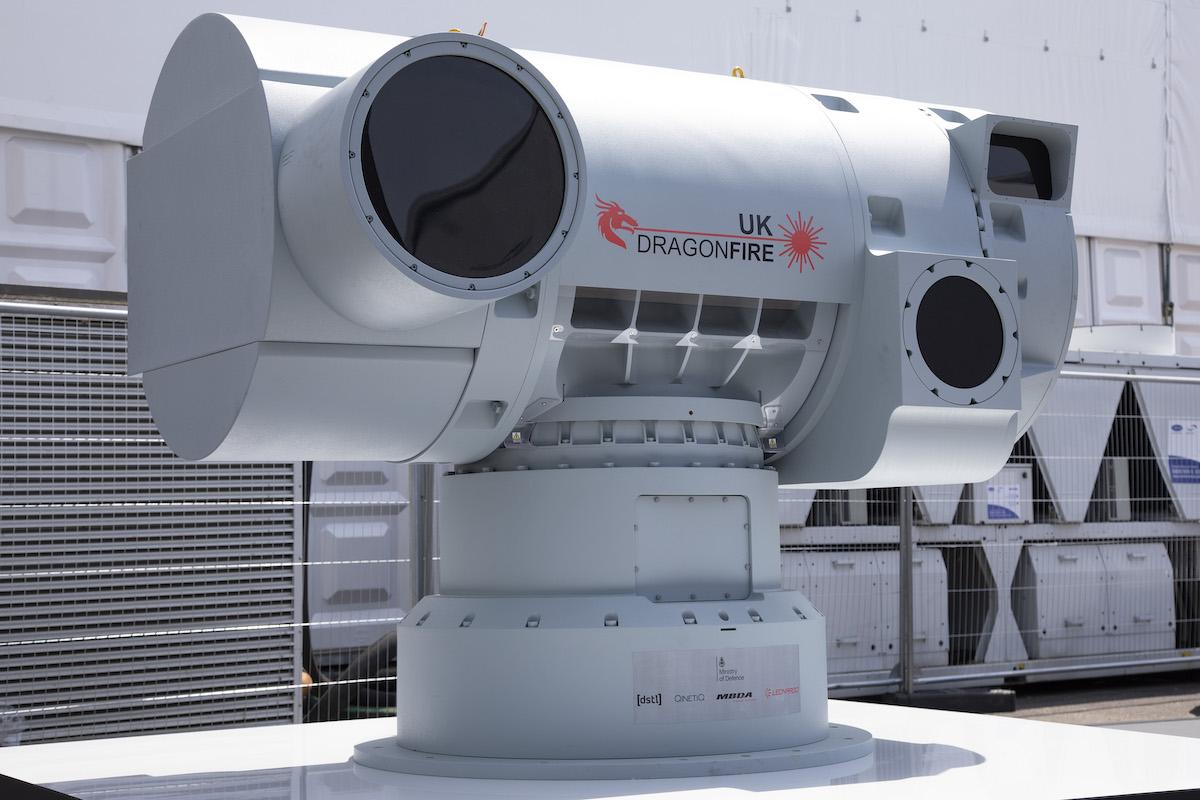
FARNBOROUGH—The MBDA-led team developing the UK Dragonfire laser has undertaken the first firings of the directed-energy weapon.
Low-power firings of the laser undertaken in the Outer Hebrides, Scotland, proved the system “can successfully track air and sea targets with exceptionally high accuracy,” MBDA announced July 17.
These tests will then pave the way for a static high-power laser trial, before a series of engagements in operationally representative scenarios.
The 50 kW-class laser has been developed by the Dragonfire consortium, which includes the UK Defense Ministry, MBDA, Leonardo, QinetiQ and the UK Defense Science and Technology Laboratory (DSTL).
Development has been slowed by a series of technical problems, and was subsequently impacted by the pandemic. Trials had originally been due to take place in 2019.
“The success of these trials is a key step in the development of sovereign laser directed energy weapons,” says Chris Allam, Managing Director of MBDA UK.
He says the weapon used “unique innovations” that would test “the very limits of what of what is physically possible in the laser weapons domain.”
MBDA says the initial trial used a low-power QinetiQ-developed laser, Leonardo’s beam director and MBDA’s Image Processing and Control technology for the fine pointing and tracking accuracy, which will be required to generate the damage effect when a high-powered laser will be used. Other subsystems proved in the trial include the command and control, the effector management system (EMS) and “coarse” tracking, turning the laser toward the target.
The British approach is to use a fiber laser that uses tens of glass fibers through which light is shone. The benefit of using this approach is that the light is stable, but the challenge comes with aligning and combining the numerous beams into one single powerful parallel beam. The UK approach to combining the beams remains secret.
A turret will house the laser and associated targeting systems including an electro-optical camera and a second lower-power laser for imaging and tracking. Adaptive optics help to deal with the impact of the atmosphere, fast mirrors like those used on optical telescopes compensate for the variations found in the air due to temperature.
The Dragonfire consortium secured Defense Science and Technology Laboratories’ £30 million ($39 million) Laser Directed Energy Weapon Capability Demonstrator (LDEW-CD) back in 2016.

